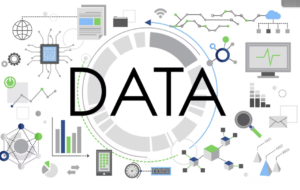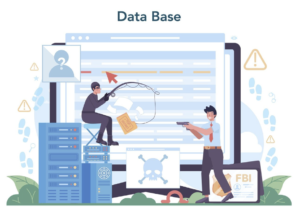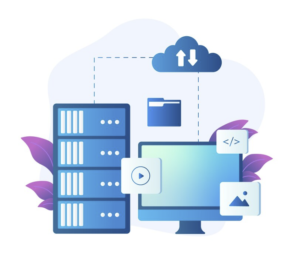In a world driven by data, the demand for skilled professionals who can interpret, analyze, and derive actionable insights from vast datasets is soaring. Data analytics has emerged as a dynamic and rewarding field, offering individuals the opportunity to play a pivotal role in shaping the future of businesses and industries. In this comprehensive guide, we’ll explore, in simple terms, whether a career in data analytics is a good choice, unpacking the reasons why this field is gaining prominence and the potential it holds for those considering it as a career path.

The Rise of Data Analytics:
What is Data Analytics?
Before we dive into the career prospects, let’s clarify what data analytics involves. Data analytics is the process of examining and interpreting data to uncover meaningful patterns, trends, and insights. It spans a range of techniques, from statistical analysis to machine learning, and is applicable across various industries.
Why Data Analytics is in High Demand:
1. Data-Driven Decision-Making:
Simplified Overview:
Businesses today rely on data to make informed decisions, and data analytics is the key to unlocking actionable insights.
Importance:
In a landscape where data drives decision-making, organizations seek professionals who can translate data into meaningful strategies. A career in data analytics positions you at the forefront of this data-driven revolution.
2. Industry Relevance:
Simplified Overview:
Data analytics is applicable across diverse industries, including finance, healthcare, e-commerce, and more.
Importance:
The versatility of data analytics means that professionals can choose to work in sectors that align with their interests. Whether it’s optimizing healthcare processes or enhancing user experiences in e-commerce, data analytics offers a wide range of exciting opportunities.
Also Read: Understanding Why Big Data Analytics is Important
3. Digital Transformation:
Simplified Overview:
The digital transformation era has amplified the need for data-driven insights, creating a surge in demand for data analytics professionals.
Importance:
As businesses transition into the digital age, data analytics plays a central role in helping them adapt, innovate, and stay competitive. This demand ensures a wealth of opportunities for those pursuing a career in the field.
4. Problem Solving and Innovation:
Simplified Overview:
Data analytics involves solving complex problems, identifying patterns, and driving innovation through data-driven strategies.
Importance:
If you enjoy problem-solving and using data to uncover solutions, a career in data analytics provides a platform to continuously tackle challenges and contribute to innovative solutions.
The Pros of a Career in Data Analytics:
1. High Demand for Skills:
Simplified Overview:
The demand for skilled data analytics professionals far exceeds the current supply, creating a favorable job market.
Importance:
Job security and a wealth of job opportunities make data analytics an attractive career choice. As organizations recognize the value of data, the need for skilled professionals continues to grow.
2. Competitive Salaries:
Simplified Overview:
Data analytics roles often come with competitive salaries, reflecting the high demand for specialized skills.
Importance:
A career in data analytics can be financially rewarding, providing a stable income and the potential for growth as you gain experience and expertise.
3. Diverse Career Paths:
Simplified Overview:
Data analytics offers diverse career paths, allowing professionals to specialize in areas such as business analytics, data science, or machine learning.
Importance:
The flexibility to specialize in specific areas means you can tailor your career to align with your interests and strengths, creating a more fulfilling professional journey.
4. Continuous Learning Opportunities:
Simplified Overview:
The field of data analytics is ever-evolving, providing continuous opportunities for learning and staying at the forefront of technological advancements.
Importance:
If you enjoy learning and staying ahead of emerging trends, a career in data analytics offers an environment where ongoing education is not just encouraged but essential.
The Journey to a Data Analytics Career:
1. Educational Background:
Simplified Overview:
While a background in mathematics, statistics, or computer science can be beneficial, there are various educational paths, including specialized data analytics programs and certifications.
Importance:
The diverse educational paths mean that individuals from various backgrounds can enter the field, making it accessible to a broader range of aspiring professionals.
2. Technical Skills:
Simplified Overview:
Proficiency in programming languages like Python or R, familiarity with data visualization tools, and a solid understanding of statistical concepts are essential technical skills.
Importance:
Building technical skills is crucial for success in data analytics roles. Continuous learning and staying updated on industry tools and trends enhance your marketability.
3. Soft Skills:
Simplified Overview:
Effective communication, problem-solving, and critical thinking are essential soft skills for a successful career in data analytics.
Importance:
Soft skills complement technical proficiency, enabling professionals to convey insights to non-technical stakeholders and collaborate effectively within multidisciplinary teams.
4. Hands-On Experience:
Simplified Overview:
Practical experience, such as internships, projects, or participation in real-world scenarios, enhances your practical understanding of data analytics.
Importance:
Hands-on experience not only reinforces theoretical knowledge but also showcases your capabilities to potential employers, making you a more competitive candidate.
Overcoming Challenges in a Data Analytics Career:
1. Dealing with Ambiguity:
The field of data analytics often involves working with incomplete or ambiguous data. Developing the ability to navigate uncertainty is essential.
2. Data Privacy and Ethics:
As a data analytics professional, you’ll encounter sensitive information. Understanding and adhering to data privacy and ethical guidelines is crucial.
The Future of Data Analytics Careers:
As technology continues to advance, the future of data analytics careers holds exciting possibilities. Artificial intelligence, machine learning, and advancements in data processing technologies will shape the landscape, creating new avenues for professionals to explore.
Also Read: Unveiling the Power: Exploring Different Features of Big Data Analytics
In Conclusion:
In conclusion, a career in data analytics is not just good; it’s thriving. The convergence of high demand, competitive salaries, diverse career paths, and continuous learning opportunities makes data analytics an attractive choice for those looking to embark on a rewarding professional journey. Whether you’re driven by a passion for problem-solving, a desire to contribute to innovation, or the prospect of being at the forefront of the data-driven revolution, a career in data analytics can pave the way for a fulfilling and impactful future. So, if you’re ready to chart your path in the dynamic world of data, the opportunities are abundant, and the journey promises both challenge and reward.







